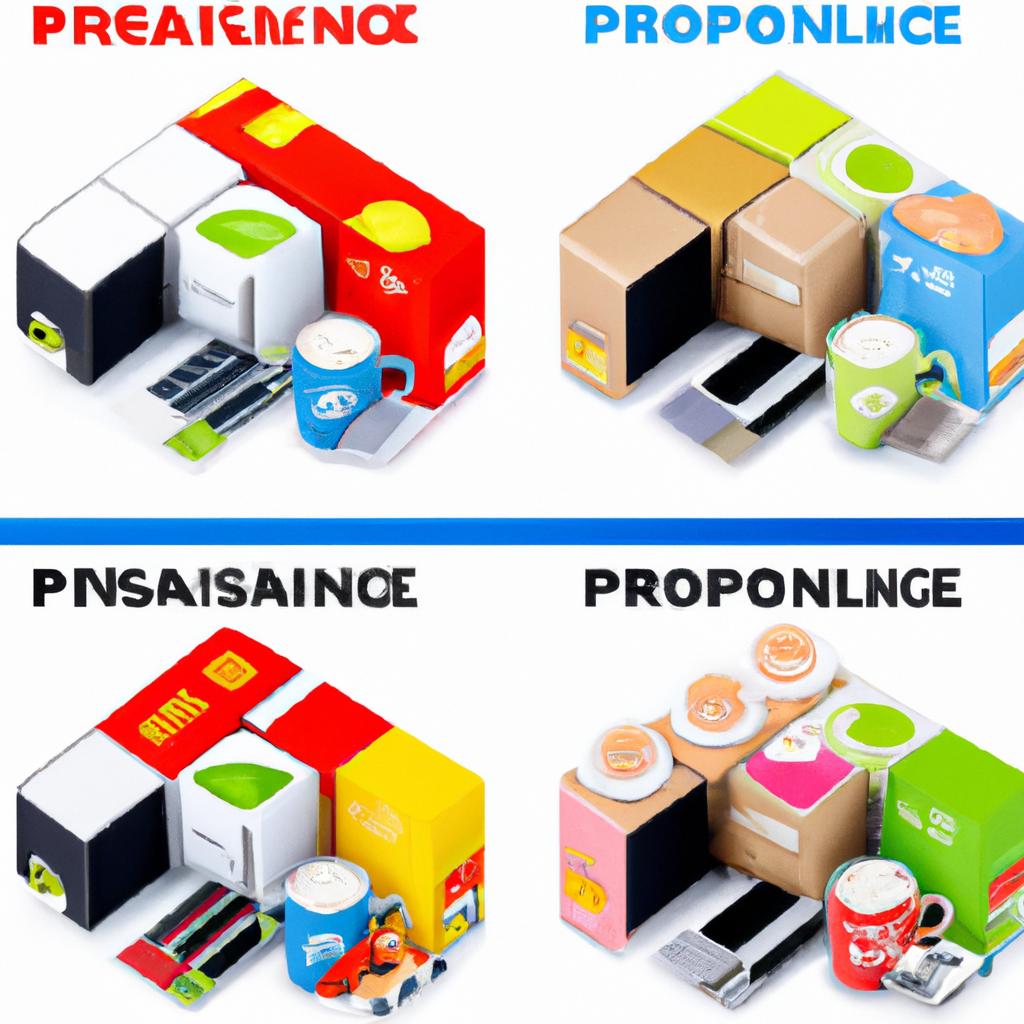In the ever-evolving landscape of retail, understanding your audience has never been more crucial. As shoppers migrate between online marketplaces, social media platforms, and physical stores, the key to unlocking successful advertising lies in knowing where and how to connect with them. Introducing “Discover Your Audience: Leveraging Advertising Spaces Across Key Shopping Channels,” this article invites you to explore the dynamic interplay between consumer behavior and advertising strategies. We’ll delve into effective tactics for maximizing your reach across diverse shopping environments, offering insights that empower brands to resonate deeply with their target demographic. Join us as we navigate the myriad advertising spaces available and uncover the potential that lies in strategic audience engagement.
Understanding Your Audiences Journey Through Shopping Channels
Understanding the customer journey across various shopping channels is essential for any brand aiming to enhance its reach and impact. Each channel offers a unique environment where consumers interact differently, making it crucial to tailor your advertising approach. **E-commerce platforms**, **social media**, and **bricks-and-mortar stores** each provide distinctive touchpoints where shoppers engage. Recognizing how consumers navigate these avenues will allow you to create targeted messaging that resonates with their specific needs at each phase of their journey. For instance, a customer may start their search for a product on social media, delve deeper into reviews on third-party websites, and finally make a purchase on an e-commerce site. Understanding these pathways helps brands craft a cohesive experience across platforms.
To effectively utilize your advertising spaces, it’s important to analyze consumer behaviors and preferences within each channel. Here are a few key tactics to consider:
- Personalization: Tailor ads based on previous interactions, buying habits, and preferences to foster a sense of individuality.
- Engagement: Utilize interactive content such as polls, quizzes, and live demos to capture attention and encourage sharing.
- Retargeting: Implement retargeting strategies across platforms to remind potential buyers of products they showed interest in.
To illustrate how audiences transition through these channels, consider the following simple framework:
| Channel | Consumer Behavior | Advertising Opportunities |
|---|---|---|
| Social Media | Initial discovery and interest | Sponsored posts, influencer partnerships |
| E-Commerce | Diving deeper into product features and reviews | Product listings, comparison ads |
| Physical Stores | In-person evaluation and purchase decision | In-store displays, promotional signage |
This framework highlights the various touchpoints and helps brands identify opportunities to engage effectively at each step of the customer’s journey. By understanding these dynamics, you can better leverage your advertising spaces to nurture relationships and ultimately drive sales.

Maximizing Impact: Strategies for Effective Ad Placement
To achieve optimal visibility, it’s paramount to understand the variances in consumer behavior across different shopping channels. Your audience is multifaceted, and so is their approach to purchasing decisions; thus, identifying the right medium to engage them is critical. Consider placing ads on platforms where your target audience is most active. Harnessing data analytics can shed light on which platforms yield the highest engagement, allowing for the customization of ads that resonate with specific preferences. Additionally, leveraging the following tactics can enhance the effectiveness of your ad placements:
- Contextual Relevance: Ensure your advertisements are relevant to the content surrounding them, enhancing the likelihood of engagement.
- A/B Testing: Experiment with different ad formats and placements to identify which combinations deliver the best results.
- Retargeting: Implement retargeting strategies to re-engage users who have shown interest but have not yet converted.
Moreover, analyzing data metrics such as click-through rates (CTR) and conversion rates is vital in determining the success of your ad placements. By creating a simple dashboard to monitor these statistics, businesses can swiftly adjust their strategies to better capture their audience’s attention. Below is a sample table that illustrates potential metrics to track:
| Metric | Description | Target Value |
|---|---|---|
| Click-Through Rate (CTR) | Percentage of viewers who click on the ad. | Above 2% |
| Conversion Rate | Percentage of clicks that result in purchases. | Above 5% |
| Cost per Acquisition (CPA) | The cost incurred to acquire a customer through the ad. | Below $20 |
By embracing a data-driven approach and refining your ad placement strategies, you elevate the potential for your campaigns to resonate deeply with your target market, ultimately transforming impressions into loyal patronage.

Analyzing Key Metrics to Refine Your Advertising Approach
In today’s fast-paced digital landscape, understanding which metrics drive your advertising performance is essential for maximizing your return on investment. By meticulously analyzing data such as click-through rates (CTR), conversion rates, and customer acquisition costs (CAC), advertisers can identify opportunities for improvement. Each platform may yield unique insights, so examining the metrics specific to each shopping channel is vital for honing your approach. Consider monitoring these crucial indicators:
- Engagement Rates: Assess how users interact with your ads across different platforms.
- Return on Ad Spend (ROAS): Calculate the revenue generated for every dollar spent on advertising.
- Audience Demographics: Understand who is engaging with your ads to tailor content effectively.
To illustrate these metrics, here’s a simple comparison table showcasing the performance of ads across three popular shopping channels:
| Shopping Channel | CTR (%) | Conversion Rate (%) | ROAS ($) |
|---|---|---|---|
| 2.5 | 4.2 | 5.00 | |
| Google Ads | 3.1 | 6.6 | 7.50 |
| 3.8 | 5.1 | 6.00 |
By continually refining your advertising approach based on these key metrics, you can shift strategies that yield higher engagement and conversions. This ongoing analysis empowers businesses to not only optimize current campaigns but also to inform future advertising initiatives, ensuring alignment with the evolving behaviors and preferences of your target audience.
In Conclusion
As we conclude our exploration of advertising spaces across key shopping channels, it’s evident that understanding and discovering your audience is not just a strategy—it’s an art. The convergence of creativity and analytics empowers brands to craft messages that resonate deeply with consumers, transcending traditional advertising boundaries.
By embracing a multi-faceted approach to advertising, businesses can unlock new opportunities for engagement, reach, and conversion. Whether it’s through targeted social media campaigns, eye-catching displays in brick-and-mortar stores, or strategic online placements, the potential to captivate your audience is limitless.
As you navigate the ever-evolving landscape of retail and digital marketing, remember that the true measure of success lies in forging genuine connections. Take the insights gleaned from your audience discovery efforts and use them to cultivate not just transactions, but enduring relationships. In this dynamic marketplace, adaptability and understanding will be your guiding stars.
So, step boldly into the future, armed with knowledge and creativity. The journey of discovering and leveraging advertising spaces has only just begun. Let your brand shine brightly amid the multitude of voices, and may your path lead to meaningful engagement and remarkable success. Happy advertising!

























